TO
1 - 25 of 8
| Creator | Title | Description | Subject | Date | ||
|---|---|---|---|---|---|---|
| 1 |
 | Reichler, Thomas J. | Breaking down the tropospheric circulation response by forcing | This study describes simulated changes in the general circulation during the twentieth and twenty -first centuries due to a number of individual direct radiat ive forcings and warming sea surface temperatures, by examining very long time-slice simulations created with an enhanced version of the Geop... | 2012-01-01 | |
| 2 |
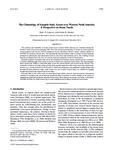 | Horel, John D. | The climatology of synoptic-scale ascent over Western North America: a perspective on storm tracks | The position and variability of storm tracks across western North America are examined during the October-April cool seasons spanning 1989-2010. The location and intensity of storms are represented by strong synoptic-scale ascent, which is diagnosed by the alternative balance omega equation applied ... | 2012-01-01 | |
| 3 |
 | Steenburgh, William James | Episodic dust events of Utahs Wasatch Front and adjoining region | Episodic dust events cause hazardous air quality along Utah's Wasatch Front and dust loading of the snowpack in the adjacentWasatch Mountains. This paper presents a climatology of episodic dust events of the Wasatch Front and adjoining region that is based on surface weather observations from the Sa... | 2012-01-01 | |
| 4 |
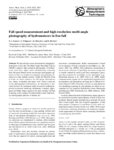 | Garrett, Timothy J. | Fall speed measurement and high-resolution multi-angle photography of hydrometeors in free fall | We describe here a new instrument for imaging hydrometeors in free fall. The Multi-Angle Snowflake Camera (MASC) captures high-resolution photographs of hydrometeors from three angles while simultaneously measuring their fall speed. Based on the stereoscopic photographs captured over the two months ... | 2012-01-01 | |
| 5 |
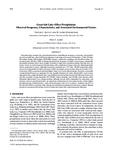 | Steenburgh, William James | Great Salt Lake-effect precipitation: observed frequency, characteristics, and associated environmental factors | This climatology examines the environmental factors controlling the frequency, occurrence, and morphology of Great Salt Lake-effect (GSLE) precipitation events using cool season (16 September-15 May) Weather Surveillance Radar-1988 Doppler (WSR-88D) imagery, radiosonde soundings, and MesoWest surfac... | 2012-01-01 | |
| 6 |
 | Horel, John D. | Idealized large-eddy simulations of sea and lake breezes: sensitivity to lake diameter, heat flux and stability | Idealized large-eddy simulations of lake and sea breezes are conducted to deter mine the sensitivity of these thermally-driven circulations to variations in the land-surface sensible heat flux and initial atmospheric stability. The lake-breeze and sea-breeze metrics of horizontal wind speed, horizon... | 2012-01-01 | |
| 7 |
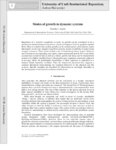 | Garrett, Timothy J. | Modes of growth in dynamic systems | Regardless of a system's complexity or scale, its growth can be considered to be a spontaneous thermodynamic response to a local convergence of down-gradient material flows. Here it is shown how system growth can be constrained to a few distinct modes that depend on the time integral of past flows a... | 2012-01-01 | |
| 8 |
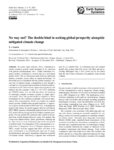 | Garrett, Timothy J. | No way out? the double-bind in seeking global prosperity alongside mitigated climate change | In a prior study (Garrett, 2011), I introduced a simple economic growth model designed to be consistent with general thermodynamic laws. Unlike traditional economic models, civilization is viewed only as a well-mixed global whole with no distinction made between individual nations, economic sectors,... | 2012-01-01 |
1 - 25 of 8
